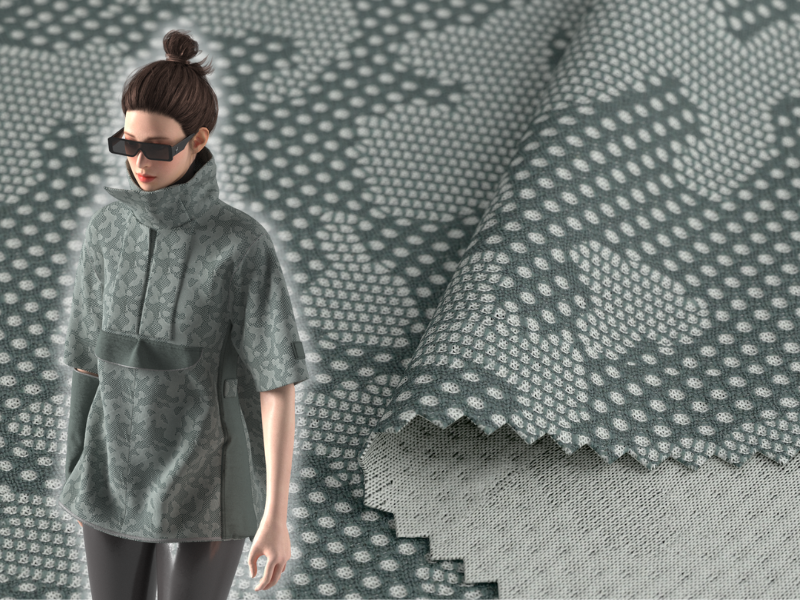
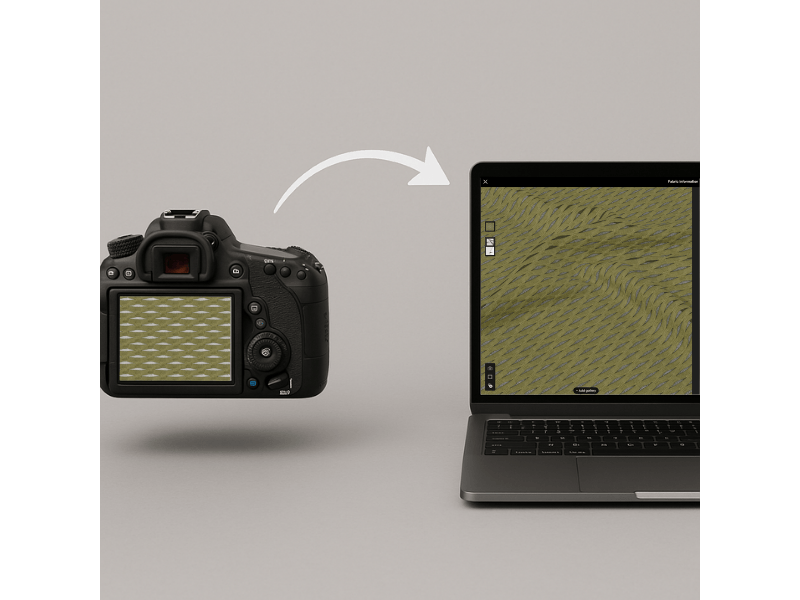
The textile and apparel industry has evolved through centuries of innovation, from the humble loom to the transformative waves of the Industrial Revolution. Today, how we visualize, design, and produce fabrics is undergoing another monumental shift in the digital age.
The textile industry is experiencing a digital transformation in how fabrics are visualized, designed, and brought to market. This article outlines the differences between traditional 2D photography and advanced 3D scanning technologies to help you choose the right approach for your business needs.
Digital textile technology bridges the physical-to-digital gap in modern fabric visualization systems.
Several market forces are accelerating the adoption of digital textile technologies:
Major brands are mandating their Tier 1 and Tier 2 suppliers and manufacturers to provide digital material files. This creates pressure throughout the supply chain to adopt advanced scanning solutions that output digital fabric files for 3D design.
With increasing production costs and competitive pricing pressures, companies seek efficiency improvements wherever possible. Digital workflows reduce sample production costs, minimize shipping expenses, and accelerate approval timelines.
The fashion industry faces mounting pressure to reduce waste. Virtual sampling and digital prototyping dramatically decrease the demand for physical samples, reducing material waste and transportation emissions.
Global teams and pandemic-driven work changes have necessitated better digital communication tools. High-quality digital fabric representations enable effective remote decision-making about materials.
Historically, the industry has relied on 2D fabric photography for its simplicity and accessibility. However, recent advancements in AI and 3D material scanning technologies have revolutionized this process, capturing intricate fabric details such as color, texture, shine, and depth with unprecedented accuracy.
This comprehensive guide explores the two dominant technologies redefining the textile visualization landscape: traditional 2D photography and cutting-edge 3D fabric scanning.
This article will help you understand the fundamentals, benefits, and limitations of each approach.
Whether you’re considering your first steps into digital fabric representation or evaluating an upgrade from 2D to 3D technology, you’ll find clear explanations and practical insights to guide your decision-making process. By the end, you’ll be equipped to choose the right digital visualization method that aligns with your budget, technical capabilities, and strategic business goals.
The Traditional Approach: 2D Fabric Photography
With just a high-quality camera and proper lighting, anyone can capture basic fabric design, color, and general aesthetic details. These images typically appear in fashion catalogs, online retail platforms, and design portfolios, providing a straightforward visual reference for clients and customers. 2D fabric photos have been the backbone of digital fabric representation for decades.
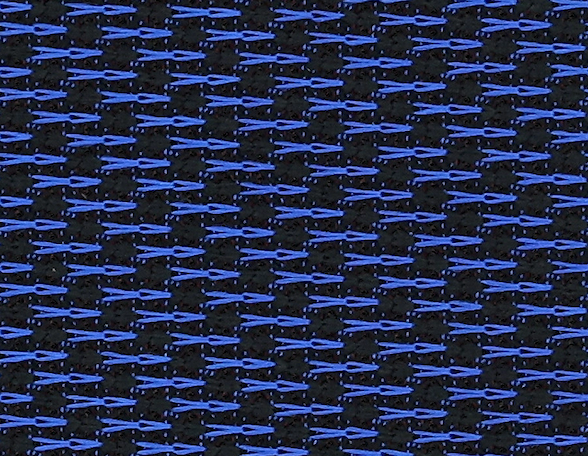
2D fabric photography is the process of capturing fabric appearance using standard photography techniques to create flat, two-dimensional digital representations of textiles. This established method converts physical fabric samples into digital images that show basic visual characteristics.
For textile professionals new to digital material representation, 2D photography offers an accessible starting point without significant technical barriers.
A camera and good lighting are usually all that’s needed for basic fabric photography. No complicated design or editing software knowledge is required, making it an accessible option for businesses of all sizes. A high-resolution camera can capture sufficient visual details for an accurate 2D representation of most fabrics.
Compared to 3D fabric scans, 2D photography requires significantly less investment. It’s an affordable option for companies with limited budgets or smaller-scale projects. Depending on the level of detail desired, specialized software or extensive training isn’t necessary for basic fabric documentation.
2D images are universally supported across multiple digital platforms and devices. They can be easily shared, viewed, and incorporated into existing workflows without specialized tools. These photos can be edited with widely available software, making them versatile for marketing and communications purposes.
Most consumers are accustomed to viewing products through 2D images. This familiarity can be advantageous for e-commerce platforms where shoppers expect standard product photography.
Traditional photography allows for rapid capture and processing of fabric images. This speed can be crucial for businesses working with tight deadlines or those needing to update their digital catalogs frequently as new materials become available.
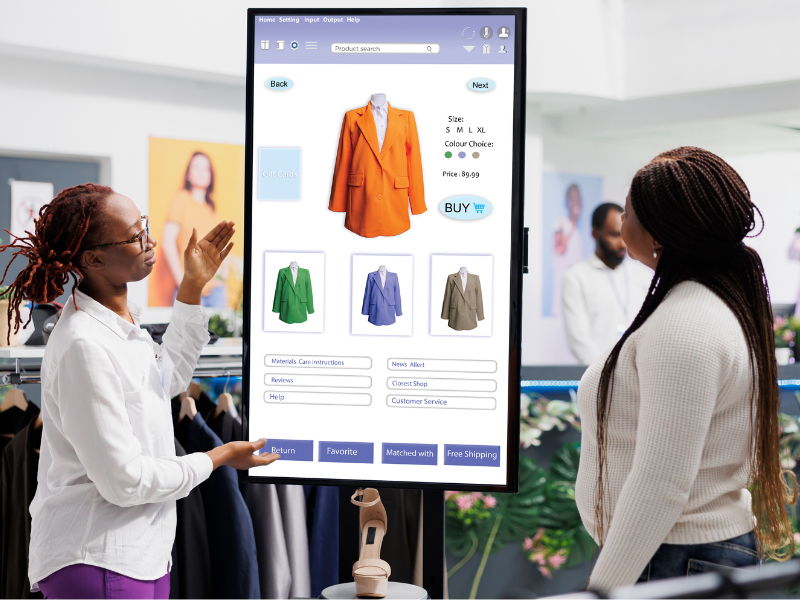
Variations in lighting conditions and camera angles can significantly skew color accuracy and distort texture representation in the final image. Without a standardized capture environment, fabric photos may not accurately convey the material’s true colors and texture.
This inconsistency can lead to quality control issues and customer dissatisfaction since what consumers see online might not match the physical product they receive. Low image fidelity also limits the usefulness of these images in professional design software applications.
Standard photos cannot capture the three-dimensional essence of fabrics, limiting the accuracy of the visual representation. The inability to properly convey texture, drape, and material properties makes it difficult for designers and customers to imagine how the fabric will look and behave in real-world applications.
Fabrics with bumps and uneven surfaces, such as furs and heavily textured materials, don’t look as real in the digital environment when captured with 2D photography. These complex textures require depth information to accurately represent their distinctive characteristics, which flat images simply cannot provide.
As design workflows become increasingly digital, 2D images offer limited functionality for virtual prototyping, 3D modeling, and advanced visualization techniques. This limitation can become a significant bottleneck for companies embracing digital transformation in their design and manufacturing processes.
As the digital-first marketplace continues to grow, there is an increasing demand for more accurate methods of fabric visualization that effectively bridge the physical and digital realms. While 2D photos offer a cost-effective solution for basic representation, the emergence of 3D scanning introduces a new dimension of accuracy and detail.
The Next Generation: 3D Fabric Scanning
3D fabric scanning is an advanced digitization process that uses specialized equipment to capture comprehensive data about a fabric’s physical properties, including color, texture, reflectivity, and depth, creating a “digital twin” of the textile. This technology produces accurate, three-dimensional digital representations that preserve material characteristics in virtual environments.
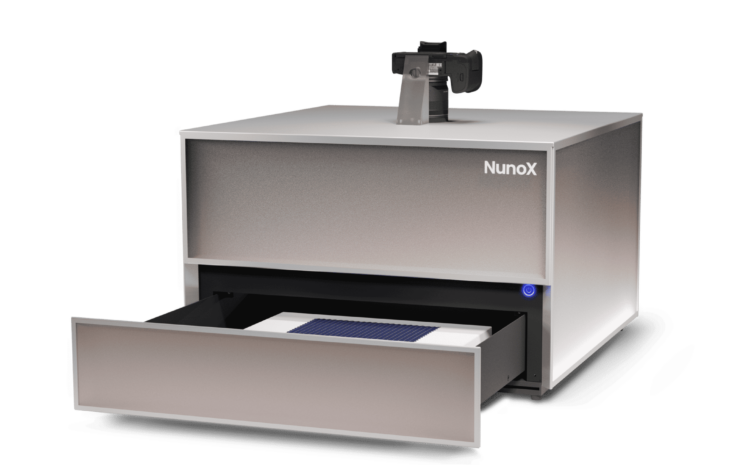
3D fabric scanning utilizes sophisticated imaging techniques to map out all visual properties of materials with precision. The result is a complete digital representation that can be manipulated and visualized in virtual environments.
For those new to digital material technologies, 3D scanning offers more detailed and versatile digital assets than traditional photography.
Modern fabric scanners automate everything from lighting setups to post-processing, significantly reducing the time and manual labor required for accurate digitization. The controlled scanner environment ensures consistent, high-fidelity digital replicas of fabrics, reproducing their textures and colors in a virtual environment with unprecedented accuracy.
These high-quality images and data create detailed texture maps that can be directly incorporated into the design process. This capability is particularly beneficial for designers who rely on precise fabric characteristics to make product development decisions.
Material suppliers can also swiftly compile comprehensive digital fabric libraries and facilitate remote collaboration with clients around the globe, reducing the need for physical sample shipping.
Read More: Ultimate Guide To The Best Fabric Scanners (2025).
Integrating AI technology with 3D scanning opens up new possibilities for textile visualization. The detailed data collected allows for realistic 3D renderings and simulations of how fabrics will look and behave on virtual models or in interior design applications.
The depth of detail captured by advanced scanners, like the NunoX Premium Scanner, allows for a level of accuracy in digital fabric representation that is simply unachievable with 2D photography. This precision is crucial for applications such as virtual prototyping and augmented reality (AR), which are increasingly important in modern design and retail environments.
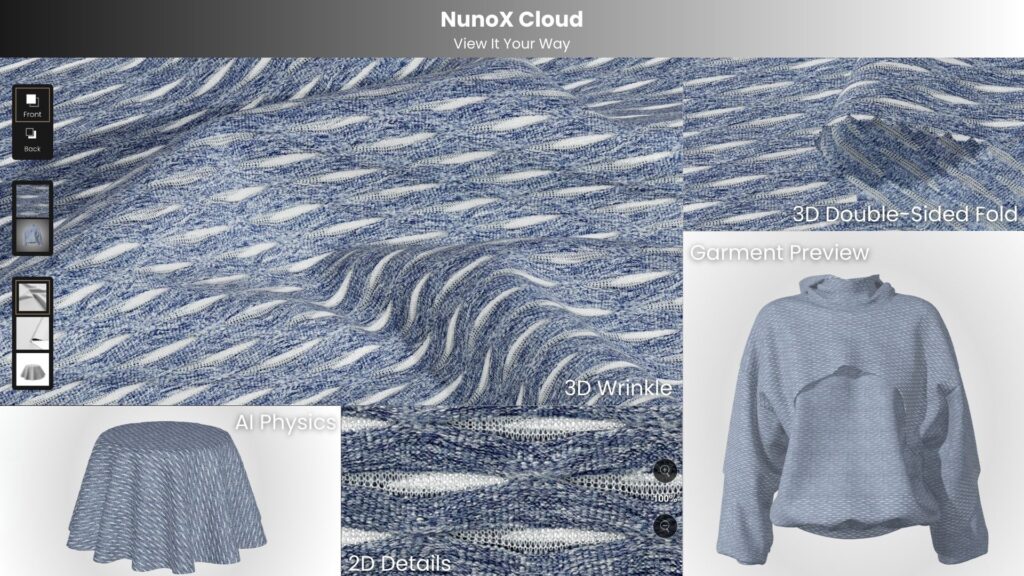
3D fabric models can be seamlessly integrated into various digital platforms, AR, and virtual reality (VR) applications, enhancing the user experience by providing more immersive and interactive visual content.
With AR technology, retailers can create engaging interactive experiences, such as virtual try-on solutions that allow customers to see how clothing will look without physically visiting a store. VR applications enable designers to create detailed prototypes and visualize them on virtual models before physical production begins.
This digital-first approach reduces the need for physical samples and prototypes, lowering production costs, minimizing material waste, and significantly accelerating the design process.
The rise of digital fashion has created exciting new opportunities for 3D fabric technology. Designers can now create digital clothing for video game characters, online avatars, and virtual fashion experiences. This growing market for virtual fashion allows for creative expression in digital spaces where consumers increasingly want to customize their virtual presence.
Although the upfront investment for 3D scanners can be substantial, the long-term benefits often justify the initial outlay. The high precision and detailed outputs of 3D scans minimize errors in production and significantly reduce material waste, resulting in considerable cost savings over time.
The requirement for specialized training to operate advanced scanning equipment and software represents both a challenge and an opportunity. This training equips staff with high-level digital skills, fostering a culture of innovation and ensuring that the company remains competitive in an increasingly technology-driven industry.
Managing the large volumes of data generated by 3D scanning requires a robust IT infrastructure. While setting up such infrastructure entails a significant investment, it enables companies to manage more complex design projects efficiently and scale operations effectively.
These advanced data processing capabilities are essential for companies looking to lead in the digital transformation of the textile and apparel industry. The scalability and adaptability provided by 3D fabric scanning allow businesses to respond quickly to new market trends and evolving customer expectations.
2D Fabric
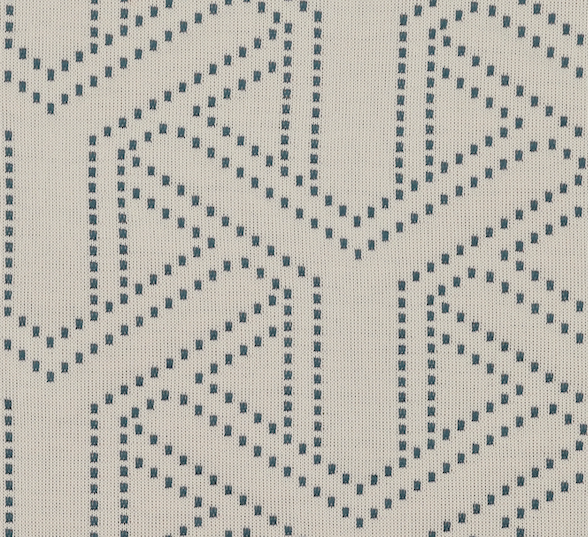
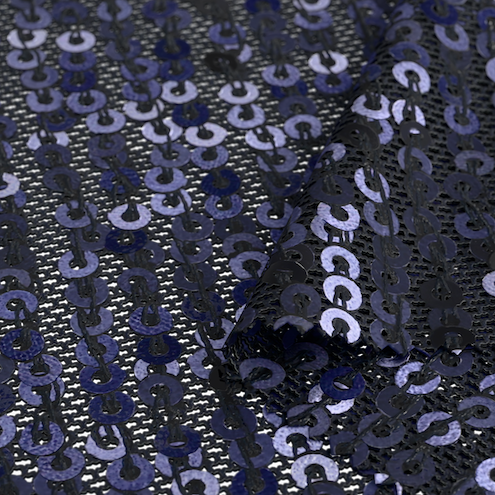

3D Fabric
While both 2D fabric photos and 3D fabric scanning serve similar fundamental purposes, their applications and business impact vary significantly depending on specific project requirements and long-term strategic goals.
| Comparison Factor | 2D Photography | 3D Fabric Scanner |
|---|---|---|
| Digital Representation Quality | Captures basic color and texture representation with limited accuracy; depends heavily on lighting conditions | Creates high-fidelity digital twins capturing texture, color variations, shine, depth, and material behavior details |
| Investment Requirements | Cost-effective with minimal setup ($500–5,000); lower upfront investment but potentially higher ongoing costs from repeated photography and sample production | Higher initial investment ($10,000–50,000) for specialized hardware and software; costs offset by reduced physical sampling, enhanced design capabilities, and material waste reduction |
| Technical Complexity | Low barrier to entry; requires basic photography skills and manual camera, lighting, and angle setup | Moderate to high complexity; provides standardized capture environment but requires training on specialized equipment and software |
| Design Application Versatility | Limited to visual reference; primarily used for marketing, online retail catalogs, and initial design inspiration | Comprehensive material data for multiple applications: virtual prototyping, digital product development, AR/VR experiences, and accurate material specification |
| Future-Proofing Value | Limited scalability; may become inadequate as digital design processes advance | High adaptability with growing digital ecosystem; compatible with emerging AR, VR, and metaverse applications |
| Consumer Experience Impact | Standard static image interaction in catalogs and websites | Enhanced interactive experiences with realistic material visualization in virtual try-on and customization tools |
| Supply Chain Integration | Limited data sharing capability | Comprehensive digital material specification for seamless supplier-manufacturer-brand collaboration |
| Sustainability Benefits | Minimal impact on reducing physical sampling | Significant reduction in physical sampling, shipping, and material waste throughout product development |
The textile industry is experiencing a fundamental transformation through sophisticated digital material representation technologies. This evolution is prompting businesses across the fashion value chain to reconsider their design, production, and distribution processes.
Advanced fabric scanning technology is enabling the creation of comprehensive digital material libraries. These repositories allow designers to access thousands of accurately digitized fabrics instantly, accelerating the material selection process and enabling exploration of more options without physical samples.
Artificial intelligence is increasingly being integrated with 3D scanned fabric data to predict how materials will drape, fold, and respond to movement. This capability is transforming digital prototyping accuracy and reducing the need for physical samples.
The expanding metaverse ecosystem and growing consumer interest in digital fashion are creating new markets for digitized fabrics. Virtual clothing for avatars, digital-only fashion collections, and cross-reality experiences all depend on high-quality digital material representations.
Precise digital material twins are enabling more accurate material requirement calculations, reducing overordering and waste. The shift from physical to digital sampling also significantly reduces the environmental impact of product development.
The line between physical and digital textile experiences continues to blur, with technologies like augmented reality allowing consumers to visualize materials in their physical environment before purchase.
Whether integrating basic 2D images or leveraging detailed 3D scans, the future of fabric visualization is undeniably digital. The right choice depends on your specific business needs, budget constraints, and long-term digital transformation goals.
Ready to explore digital fabric technology options for your business?
Discover more about NunoX’s Premium Scanner and what it can do for your specific textile visualization needs.
Contact our team for a personalized consultation and see a demonstration with your own fabrics!